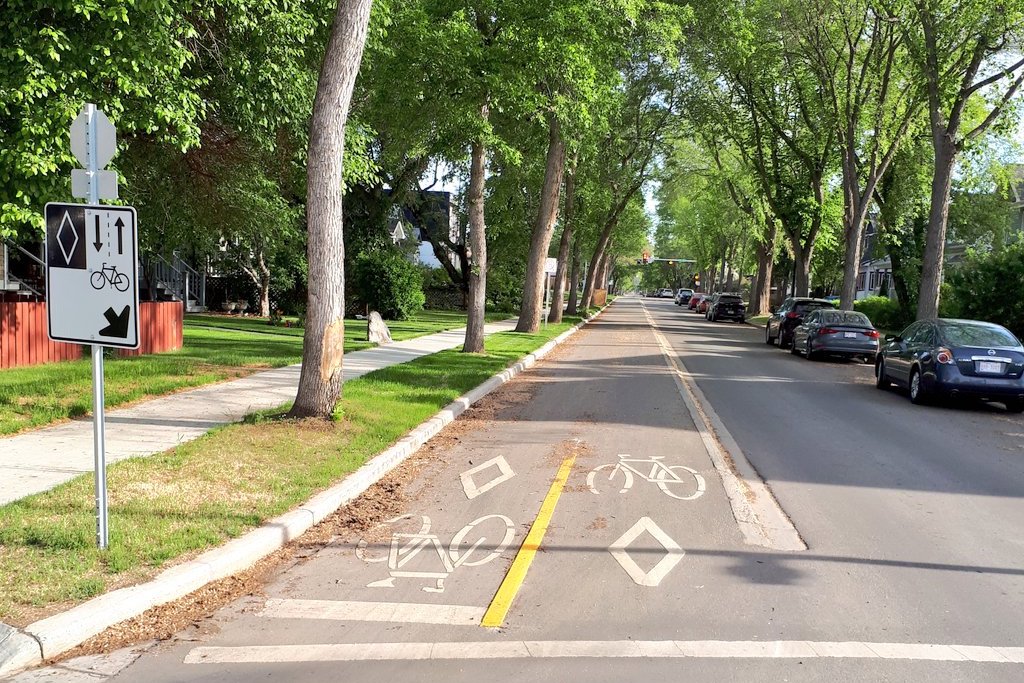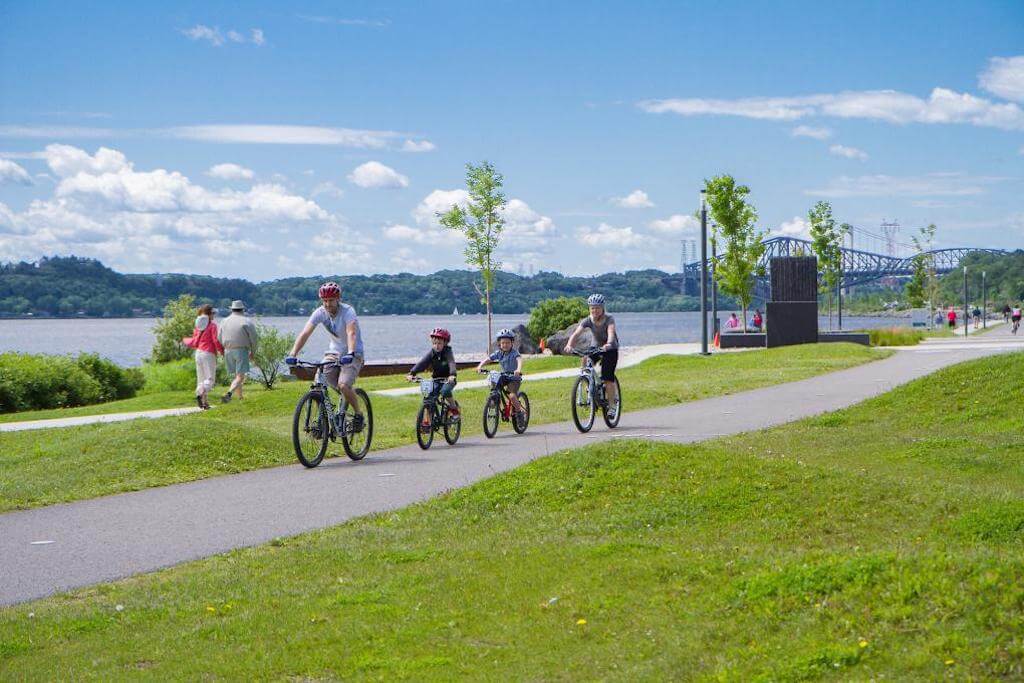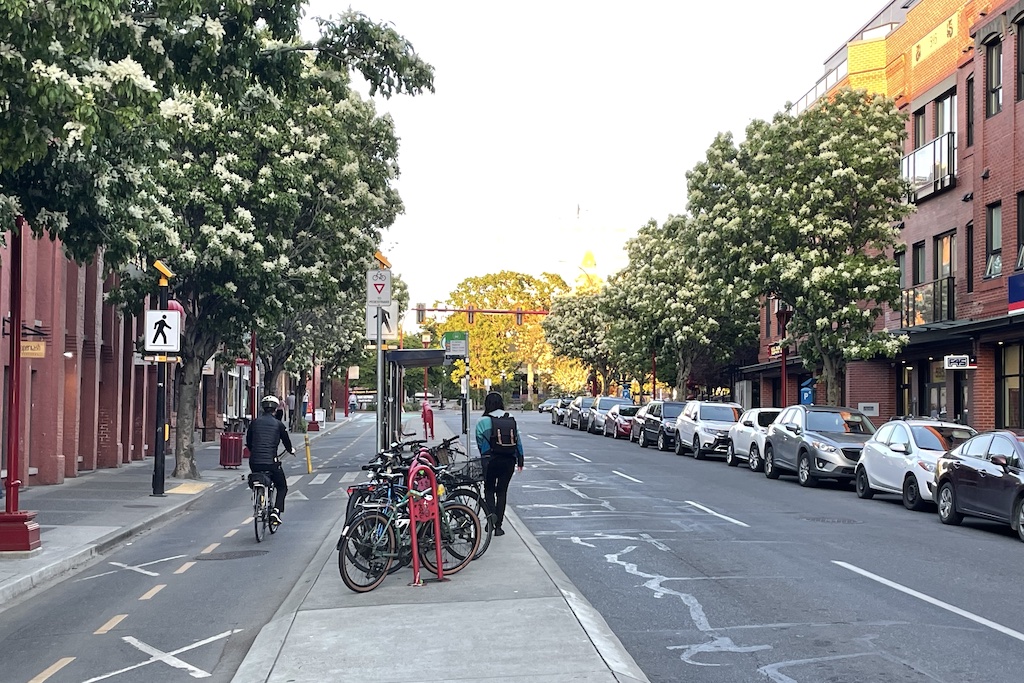Autumn Gear Guide
Find inspiration in our Gear Guide that will keep you out on your bike through wind or rain.
Download NowGoing back a decade, Montreal and Vancouver were two Canadian cities that took urban cycling seriously by investing in safe infrastructure including separated bike lanes, bike share, and more. One of those cities is still going great with Montreal establishing itself as one of the top bicycle-friendly cities in North America. Vancouver, well, Vancouver is […]
Going back a decade, Montreal and Vancouver were two Canadian cities that took urban cycling seriously by investing in safe infrastructure including separated bike lanes, bike share, and more. One of those cities is still going great with Montreal establishing itself as one of the top bicycle-friendly cities in North America. Vancouver, well, Vancouver is going backward. But, there are many other cities who understand not only what is at stake with the climate crisis but also the incredible benefits that come with investing in the humble bicycle.
As cities strive to combat climate change, reduce traffic congestion, and promote healthier lifestyles, bicycles are emerging as a key element in the urban transportation puzzle. Not only that, with inflation and interest rates still in the stratosphere, and the cost of car ownership in Canada topping a whopping $11,000 per year, there is also a huge financial incentive for bicycles.
This feature delves into four Canadian cities making significant investments in cycling infrastructure, positioning themselves as leaders in sustainable urban mobility.
Once known primarily for its harsh winters and sprawling layout, Edmonton is transforming into a cycling-friendly city. Edmonton’s Bike Plan, introduced in 2020, aims to develop 100 kilometers of high-quality bike lanes and shared-use paths by 2026 to the tune of a sizeable $100 million investment. The plan prioritizes the creation of a connected network that links neighborhoods, parks, and business districts.

Edmonton bike lanes (photo: Twitter @tylergolly)
Overall, the plan is looking to add 678 kilometers of new and improved bike routes by 2032.
The city is also embracing the concept of the 15-minute city by dividing the area into 15 districts that will be the focus of unique planning that emphasises the development of community nodes, and corridors for more housing density and employment activity.
The downtown core has already seen a surge in cycling infrastructure, including protected bike lanes and bike racks. Edmonton’s commitment extends beyond infrastructure, with programs encouraging bike use, such as community bike shares and educational campaigns promoting bike safety. This prairie city is proving that with the right investments, even traditionally car-centric cities can embrace cycling culture.
Hamilton, once dominated by the steel industry, is reinventing itself with a robust focus on cycling. The city’s Transportation Master Plan includes a comprehensive Cycling Master Plan. The SoBi Hamilton bike share program, launched in 2015, has been instrumental in this transformation, offering a convenient and affordable mode of transportation.
This past spring, Hamilton approved $60 million in funding for the Accelerated Active Transportation Implementation Plan to deliver 151 km of cycling facilities from 2024-2028, doubling the annual addition of new or improved bike lanes and multi-use pathways.
This plan, developed at the council’s request to expedite the Cycling Master Plan, has already secured partial funding from municipal, provincial, and federal governments, with additional funds to be sought through the capital budget process over the next five years. It outlines infrastructure development for the next five years while staff work on an Integrated Active Transportation Plan (ATP) that will combine the Cycling Master Plan, Pedestrian Mobility Plan, and Recreational Trails Master Plan into a 10-year strategy for future construction.
I have walked and bussed and drove past this bike lane several times, but today I rode a bike on it for the first time! Bravo #HamOnt, the Cannon bike lanes are a thing of beauty. pic.twitter.com/EswpmWGiYv
— Madeleine Bonsma-Fisher (@mbonsma) August 13, 2023
Hamilton’s cycling network is designed to cater to all ages and abilities, with protected bike lanes, multi-use trails, and traffic-calmed streets. Notable projects include the Cannon Street Cycle Track, which provides a safe east-west route through the city. By investing in cycling, Hamilton is enhancing its urban appeal, promoting active transportation, and reducing its environmental footprint.
Quebec City, with its cobblestone streets and historic charm, is embracing modern cycling infrastructure to enhance mobility and sustainability.
The city has released plans to build a massive 150-km all-season cycling network over the next 10 years, releasing details for the “Vélocité corridors” from 2024 to 2034. This plan includes 14 top-notch, all-season cycle routes designed to enhance active mobility. Mayor Bruno Marchand highlighted that this bold vision will connect the entire territory, significantly improving the health, quality of life, and safety of citizens by providing adequate facilities to promote longer-term active and healthy living.

Quebec City cycling (photo: Stephane Audet, Destination Quebec)
The plan aims for 85% of the city’s 35 neighborhoods to have Community Vehicle Centers (CVCs), improving connections between different areas based on residents’ needs and travel patterns.
Angèle Pineau-Lemieux of Sustainable Transport Access emphasized the plan as a major turning point, addressing the historical neglect of pedestrians and cyclists and ensuring comfortable and safe infrastructure from Beauport to Val-Bélair and Cap-Rouge. This initiative underscores the city’s commitment to enhancing comfort, safety, and efficiency for both utilitarian and recreational cyclists, promoting the broader benefits of active mobility for Quebec’s population.
“For many years, pedestrians or cyclists have sometimes felt like second-class users in Quebec,” said Pineau-Lemieux. “We know that we have a huge amount of catching up to do in our infrastructure to make it comfortable and safe. The 10-year vision of the Vélocité corridors offers us the major turning point we needed so that people want to travel on foot or by bike, from Beauport to Val-Bélair, to Cap-Rouge.”
Earlier this year, Victoria declared itself the cycling capital of Canada. While Montreal already has that title well in-hand, Victoria’s year-round cycling weather certainly helps in sheer numbers. Take a handful of the lycra-clad Galloping Goose marauders over to Montreal in January and we shall see if they can maintain the mileage when it’s minus-40 with a wind chill.

Bike lane in Victoria, BC
That being said, Victoria has certainly done plenty and picked up right where Vancouver sadly left off when it decided to give up on the two-wheeled set in the city.
Victoria continues to lead the way in cycling infrastructure and culture in Western Canada. With a mild climate and a compact urban layout, Victoria is ideal for year-round cycling.
Victoria’s commitment to cycling is evident in its extensive network of bike-friendly streets, trails, and amenities. The city’s investment in cycling extends to education and advocacy, with programs that encourage residents of all ages to take up biking. Victoria’s dedication to promoting cycling as a primary mode of transportation sets a high standard for other Canadian cities.
What is impressive about Victoria’s bike network build-out is that it extends throughout the city. Too often, cities want to clump bike lanes in the dense downtown areas, which is fine, but not good enough for the bicycle to be a true transportation alternative. In Victoria, the bike lanes extend right out to the airport which is far outside the city center. It also extends to the university. There are rail trails and the massive Galloping Goose that allow people to commute to the city center for far distances.
It’s going well in Victoria and it’s only getting better.
As these four Canadian urban cycling cities demonstrate, investing in bicycle infrastructure is not just about building bike lanes—it’s about creating vibrant, sustainable, and livable urban environments. Edmonton, Hamilton, Quebec City, and Victoria are leading the charge, showing that with vision and commitment, cities can transform themselves into cycling-friendly havens.
These examples, in very different parts of the country, some with frigid and snowy winters, some with warmer climates, show that change is coming. These urban cycling cities, not surprisingly, will be magnets for people wanting to relocate because they are proving that they want to put people first. Other Canadian cities follow suit or be left behind.
Find inspiration in our Gear Guide that will keep you out on your bike through wind or rain.
Download Now
This is a bit misleading, in that Victoria has a network of “bike and roll” routes, acknowledging all the people who roll on wheelchairs and mobility scooters here. In Victoria, you don’t have to ride a bicycle to benefit from bike and roll routes.
Sandra Hough uses a motorized wheelchair, and finds that traveling on Victoria BC’s bike and roll routes is faster, safer, and much more comfortable that using the sidewalks. https://www.youtube.com/watch?v=1xC1yLLpQ1M
Comments are closed.